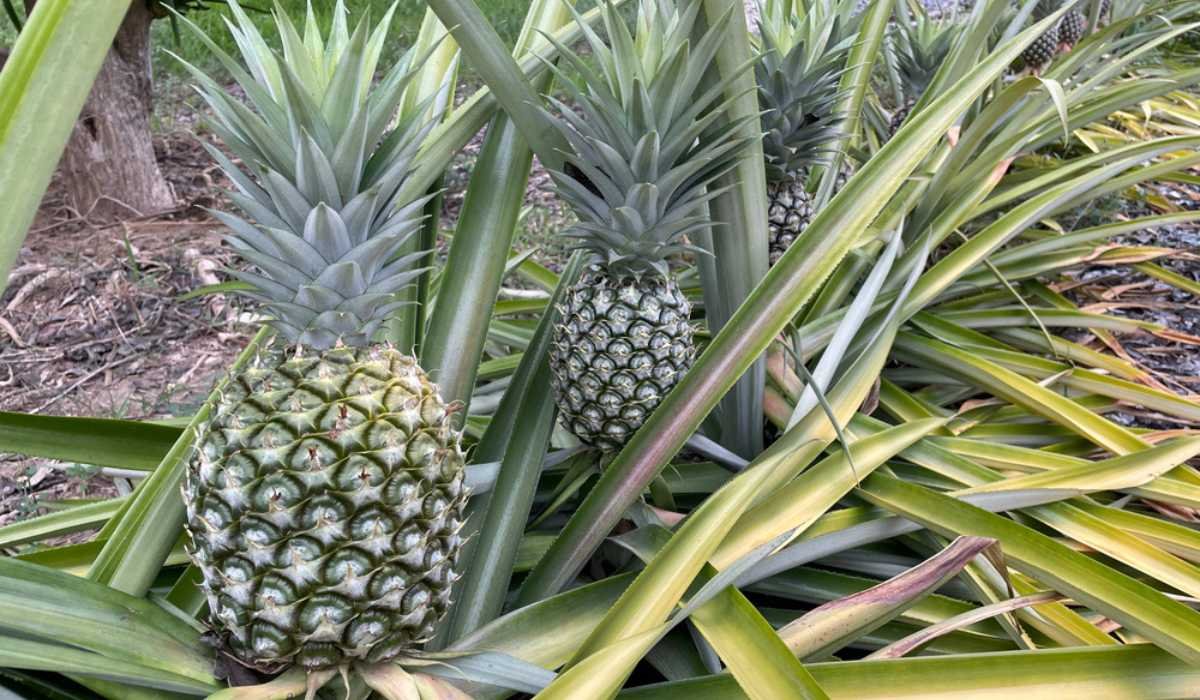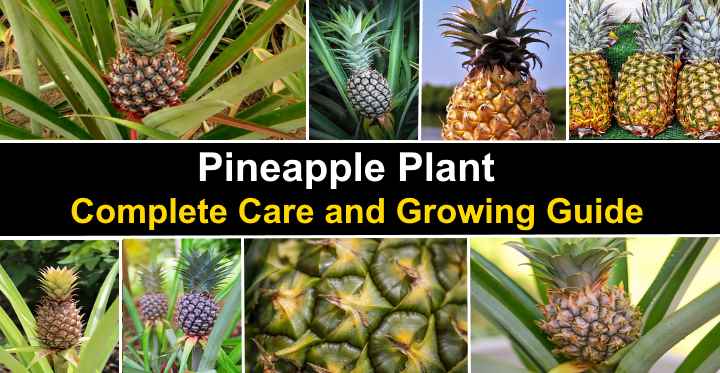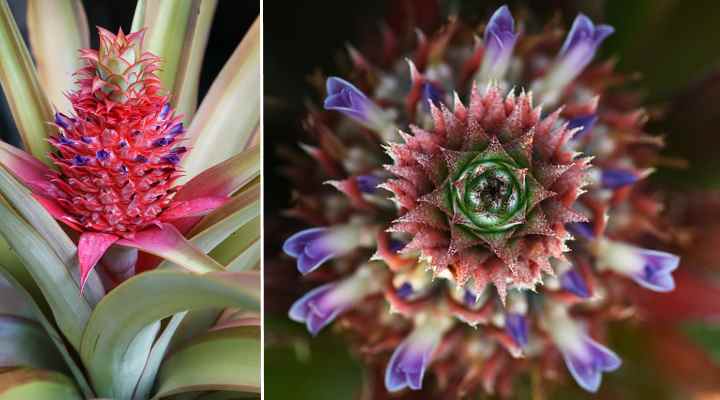Understanding the Pineapple Plant Life Cycle
The pineapple plant life cycle is a complex process that involves several stages of growth, fruiting, and potential decline. Understanding this cycle is crucial for proper care and maintenance, as it allows growers to anticipate and address potential issues before they become major problems. The life cycle of a pineapple plant typically begins with the germination of a crown or sucker, which can take anywhere from 1-3 years to mature. During this time, the plant will produce a series of tough, waxy leaves that are designed to protect it from the elements and retain moisture.
As the plant reaches maturity, it will begin to produce a flower spike, which will eventually develop into a pineapple fruit. This process can take several months to a year or more, depending on factors such as climate, soil quality, and watering. After the fruit has been harvested, the plant will enter a period of decline, during which it will begin to produce new growth and potentially produce additional fruit. However, if not properly cared for, the plant may die after fruiting, which is a common concern for many growers.
So, does a pineapple plant die after producing fruit? The answer is not a simple yes or no. While it is true that some pineapple plants may die after fruiting, this is not always the case. With proper care and maintenance, many pineapple plants can continue to thrive and produce new fruit for several years. Factors such as climate, soil quality, watering, and fertilization can all impact the plant’s lifespan and productivity.
By understanding the pineapple plant life cycle and the factors that influence its growth and productivity, growers can take steps to promote healthy growth and encourage new fruit production. This may involve pruning the plant regularly, fertilizing it with a balanced fertilizer, and providing optimal growing conditions. By taking these steps, growers can help to extend the lifespan of their pineapple plant and enjoy a bountiful harvest for years to come.
Does a Pineapple Plant Die After Producing Fruit?
One of the most common questions asked by pineapple plant enthusiasts is whether the plant dies after producing fruit. The answer to this question is not a simple yes or no. While it is true that some pineapple plants may die after fruiting, this is not always the case. In fact, with proper care and maintenance, many pineapple plants can continue to thrive and produce new fruit for several years.
So, what determines whether a pineapple plant will die after fruiting or continue to produce new fruit? The answer lies in the plant’s ability to produce new growth and offset the energy expended in producing fruit. When a pineapple plant produces fruit, it diverts a significant amount of energy and resources towards the development of the fruit. If the plant is not provided with adequate nutrients, water, and light, it may not have the energy reserves to produce new growth and continue to thrive.
However, if the plant is provided with optimal growing conditions, it can continue to produce new growth and offset the energy expended in producing fruit. In fact, some pineapple plants can produce multiple fruiting cycles, with each cycle producing a new pineapple fruit. This process is known as “ratooning,” and it allows the plant to continue producing fruit for several years.
Factors that influence the lifespan of a pineapple plant after producing fruit include the plant’s variety, growing conditions, and care practices. Some pineapple plant varieties are bred to be more productive and longer-lived than others, while optimal growing conditions such as bright light, warm temperatures, and well-draining soil can help to promote healthy growth and extend the plant’s lifespan.
In addition, proper care practices such as pruning, fertilization, and pest management can also help to promote healthy growth and extend the lifespan of a pineapple plant. By understanding the factors that influence the lifespan of a pineapple plant after producing fruit, growers can take steps to promote healthy growth and encourage new fruit production.
How to Care for a Pineapple Plant After Fruiting
After a pineapple plant has produced fruit, it’s essential to provide the right care to promote healthy growth and encourage new fruit production. One of the most critical steps is to prune the plant regularly. Pruning helps to remove dead or damaged leaves, promotes air circulation, and encourages the plant to produce new growth.
Fertilization is also crucial for pineapple plant care after fruiting. A balanced fertilizer that is high in phosphorus can help to promote healthy root development and encourage new fruit production. It’s essential to follow the instructions on the fertilizer package and avoid over-fertilizing, as this can damage the plant.
Pest management is another critical aspect of pineapple plant care after fruiting. Regularly inspect the plant for signs of pests, such as mealybugs, spider mites, and scale. If you notice any pests, treat the plant with insecticidal soap or neem oil according to the product’s instructions.
In addition to pruning, fertilization, and pest management, it’s also essential to provide the right growing conditions for your pineapple plant. Make sure the plant is receiving bright, indirect light, and maintain a consistent temperature between 65-90°F (18-32°C). Water the plant regularly, but avoid over-watering, which can lead to root rot.
By following these care tips, you can help to promote healthy growth and encourage new fruit production in your pineapple plant. Remember to be patient, as it may take several months for the plant to produce new fruit. With proper care and maintenance, your pineapple plant can continue to thrive and produce delicious fruit for years to come.
It’s also important to note that pineapple plants can be sensitive to extreme temperatures, so it’s essential to protect the plant from frost and freezing temperatures. If you live in an area with cold winters, consider bringing the plant indoors or using a frost blanket to protect it.
By providing the right care and maintenance, you can help to extend the lifespan of your pineapple plant and enjoy a bountiful harvest for years to come. Whether you’re a seasoned gardener or just starting out, with the right care and attention, your pineapple plant can thrive and provide you with delicious fruit for years to come.
Promoting Healthy Growth and Encouraging New Fruit
Promoting healthy growth and encouraging new fruit production in pineapple plants requires a combination of optimal growing conditions, proper care, and attention to the plant’s nutritional needs. One of the most critical factors in promoting healthy growth is light. Pineapple plants require bright, indirect light to photosynthesize and produce the energy they need to grow and produce fruit.
Water is also essential for healthy growth and fruit production in pineapple plants. The plant requires consistent moisture, especially when it’s producing fruit. However, over-watering can be detrimental to the plant, so it’s essential to monitor the soil moisture and adjust watering accordingly.
Nutrients are also crucial for promoting healthy growth and encouraging new fruit production in pineapple plants. A balanced fertilizer that is high in phosphorus can help to promote healthy root development and encourage new fruit production. It’s essential to follow the instructions on the fertilizer package and avoid over-fertilizing, as this can damage the plant.
In addition to light, water, and nutrients, temperature also plays a critical role in promoting healthy growth and encouraging new fruit production in pineapple plants. The ideal temperature for pineapple plants is between 65-90°F (18-32°C), and temperatures outside of this range can affect the plant’s growth and fruit production.
Humidity is also an essential factor in promoting healthy growth and encouraging new fruit production in pineapple plants. The ideal humidity level for pineapple plants is between 50-70%, and humidity levels outside of this range can affect the plant’s growth and fruit production.
By providing optimal growing conditions, proper care, and attention to the plant’s nutritional needs, you can promote healthy growth and encourage new fruit production in your pineapple plant. Remember to be patient, as it may take several months for the plant to produce new fruit. With proper care and maintenance, your pineapple plant can continue to thrive and produce delicious fruit for years to come.
It’s also important to note that pineapple plants can be sensitive to extreme temperatures, so it’s essential to protect the plant from frost and freezing temperatures. If you live in an area with cold winters, consider bringing the plant indoors or using a frost blanket to protect it.
By following these tips and providing optimal growing conditions, you can promote healthy growth and encourage new fruit production in your pineapple plant. Whether you’re a seasoned gardener or just starting out, with the right care and attention, your pineapple plant can thrive and provide you with delicious fruit for years to come.
Common Mistakes to Avoid When Caring for a Pineapple Plant After Fruiting
When caring for a pineapple plant after it has produced fruit, there are several common mistakes to avoid in order to ensure the plant’s continued health and productivity. One of the most common mistakes is over-watering, which can lead to root rot and other problems. It’s essential to monitor the soil moisture and adjust watering accordingly.
Under-fertilization is another common mistake that can shorten the lifespan of a pineapple plant after fruiting. Fertilization is essential for promoting healthy growth and encouraging new fruit production, so it’s crucial to provide the plant with a balanced fertilizer that is high in phosphorus.
Neglecting pest management is also a common mistake that can harm a pineapple plant after fruiting. Regularly inspect the plant for signs of pests, such as mealybugs, spider mites, and scale, and treat the plant with insecticidal soap or neem oil according to the product’s instructions.
Another common mistake is not providing enough light for the plant. Pineapple plants require bright, indirect light to photosynthesize and produce the energy they need to grow and produce fruit. If the plant is not receiving enough light, it may not produce new fruit or may become leggy and weak.
Not pruning the plant regularly is also a common mistake that can shorten the lifespan of a pineapple plant after fruiting. Pruning helps to remove dead or damaged leaves, promotes air circulation, and encourages the plant to produce new growth.
Finally, not monitoring for diseases is a common mistake that can harm a pineapple plant after fruiting. Regularly inspect the plant for signs of diseases, such as fungal infections or bacterial spot, and treat the plant with fungicides or bactericides according to the product’s instructions.
By avoiding these common mistakes, you can help to ensure the continued health and productivity of your pineapple plant after it has produced fruit. Remember to be patient, as it may take several months for the plant to produce new fruit. With proper care and maintenance, your pineapple plant can continue to thrive and produce delicious fruit for years to come.
https://www.youtube.com/watch?v=D4iDBK0U6po
How to Propagate a Pineapple Plant After Fruiting
Propagating a pineapple plant after it has produced fruit is a great way to share plants with friends and family, or to create new plants for your own garden. There are several methods of propagation, including crown cutting and suckers.
Crown cutting is a popular method of propagation for pineapple plants. To propagate a pineapple plant using crown cutting, you will need to remove the crown from the top of the fruit. The crown is the tough, waxy part of the fruit that is attached to the leaves. Use a sharp knife or pruning tool to remove the crown, making sure to leave a small amount of stem attached to the leaves.
Once you have removed the crown, allow it to dry for a few days to form a callus over the cut area. This will help to prevent the crown from rotting when it is planted. Plant the crown in a pot filled with well-draining soil, and water it thoroughly. Keep the soil consistently moist, but not waterlogged, until the new plant is established.
Suckers are another method of propagation for pineapple plants. Suckers are the small plants that grow from the base of the mother plant. To propagate a pineapple plant using suckers, you will need to remove the sucker from the mother plant. Use a sharp knife or pruning tool to remove the sucker, making sure to leave a small amount of stem attached to the leaves.
Once you have removed the sucker, plant it in a pot filled with well-draining soil, and water it thoroughly. Keep the soil consistently moist, but not waterlogged, until the new plant is established.
Regardless of the method of propagation you choose, make sure to provide the new plant with optimal growing conditions, including bright, indirect light, and consistent temperatures between 65-90°F (18-32°C). With proper care and maintenance, your new pineapple plant should thrive and produce delicious fruit for years to come.
It’s also important to note that pineapple plants can be sensitive to extreme temperatures, so it’s essential to protect the plant from frost and freezing temperatures. If you live in an area with cold winters, consider bringing the plant indoors or using a frost blanket to protect it.
By following these steps and providing optimal growing conditions, you can successfully propagate a pineapple plant after it has produced fruit. Whether you’re a seasoned gardener or just starting out, propagating a pineapple plant is a fun and rewarding experience that can provide you with a bountiful harvest for years to come.
Maximizing the Lifespan of Your Pineapple Plant
To maximize the lifespan of your pineapple plant, it’s essential to provide optimal growing conditions, monitor for pests and diseases, and prune the plant regularly. By following these tips, you can help to extend the lifespan of your pineapple plant and enjoy a bountiful harvest for years to come.
Providing optimal growing conditions is crucial for the health and longevity of your pineapple plant. Make sure to provide bright, indirect light, and consistent temperatures between 65-90°F (18-32°C). Water the plant regularly, but avoid over-watering, which can lead to root rot and other problems.
Monitoring for pests and diseases is also essential for the health and longevity of your pineapple plant. Regularly inspect the plant for signs of pests, such as mealybugs, spider mites, and scale, and treat the plant with insecticidal soap or neem oil according to the product’s instructions. Also, monitor for diseases, such as fungal infections or bacterial spot, and treat the plant with fungicides or bactericides according to the product’s instructions.
Pruning the plant regularly is also important for maintaining its health and promoting new growth. Remove any dead or damaged leaves, and cut back the plant to encourage new growth and fruiting. Pruning also helps to prevent the plant from becoming leggy and promotes a bushy, compact shape.
In addition to providing optimal growing conditions, monitoring for pests and diseases, and pruning the plant regularly, there are several other tips that can help to maximize the lifespan of your pineapple plant. Make sure to fertilize the plant regularly, using a balanced fertilizer that is high in phosphorus. This will help to promote healthy growth and fruiting.
Also, make sure to repot the plant every 2-3 years, using a well-draining potting mix and a pot that is slightly larger than the previous one. This will help to provide the plant with fresh soil and a larger root system, which will promote healthy growth and fruiting.
By following these tips, you can help to maximize the lifespan of your pineapple plant and enjoy a bountiful harvest for years to come. Remember to be patient, as it may take several months for the plant to produce new fruit. With proper care and maintenance, your pineapple plant can continue to thrive and provide you with delicious fruit for years to come.
Conclusion: Enjoying a Long and Fruitful Relationship with Your Pineapple Plant
In conclusion, with proper care and maintenance, a pineapple plant can continue to thrive and produce delicious fruit for years to come. By understanding the life cycle of a pineapple plant, providing optimal growing conditions, and avoiding common mistakes, you can enjoy a long and fruitful relationship with your pineapple plant.
Remember to prune your pineapple plant regularly, fertilize it with a balanced fertilizer, and monitor for pests and diseases. Also, make sure to provide your pineapple plant with bright, indirect light, and consistent temperatures between 65-90°F (18-32°C).
By following these tips and recommendations, you can help to maximize the lifespan of your pineapple plant and enjoy a bountiful harvest for years to come. Whether you’re a seasoned gardener or just starting out, with the right care and maintenance, your pineapple plant can provide you with a delicious and nutritious fruit that is perfect for snacking, cooking, and sharing with friends and family.
So, if you’re wondering “does a pineapple plant die after producing fruit?”, the answer is no, it doesn’t have to. With proper care and maintenance, a pineapple plant can continue to thrive and produce delicious fruit for years to come. By following the tips and recommendations outlined in this article, you can enjoy a long and fruitful relationship with your pineapple plant and reap the many benefits that it has to offer.
Happy growing!








